Were the cars really that much closer together at Atlanta on Sunday than they were in 2018?
If you spent any extended time watching Fox’s broadcast of Sunday’s race at Atlanta Motor Speedway, the sales pitches were pretty clear. What you were witnessing, Fox wanted you to believe, was a lot better and closer than the Atlanta race you watched in 2018.
Heck, the selling came 22 laps into the race, when Jeff Gordon of all people said lap times were closer together at Atlanta than they used to be.
“I’ve never seen times this close throughout the field here at Atlanta,” Gordon said. “We typically see where tires fall off and there’s one car or a handful of cars that seem to have so much more speed than the rest of the competition. And right now, when I look through it, they are so tight. So track position is definitely going to be important.”
On lap 23 in 2018, the 20th-place car was roughly the same distance back (16.76 seconds) from the leader that the 20th-place car was (16.74) behind the leader on lap 23 of Sunday’s race. The driver in 10th on Sunday was four seconds closer to the lead (11.38) than the 10th-place driver in 2018 was (7.67), but the driver in second was further back (2.187) than the driver in third was a year ago (2.07).
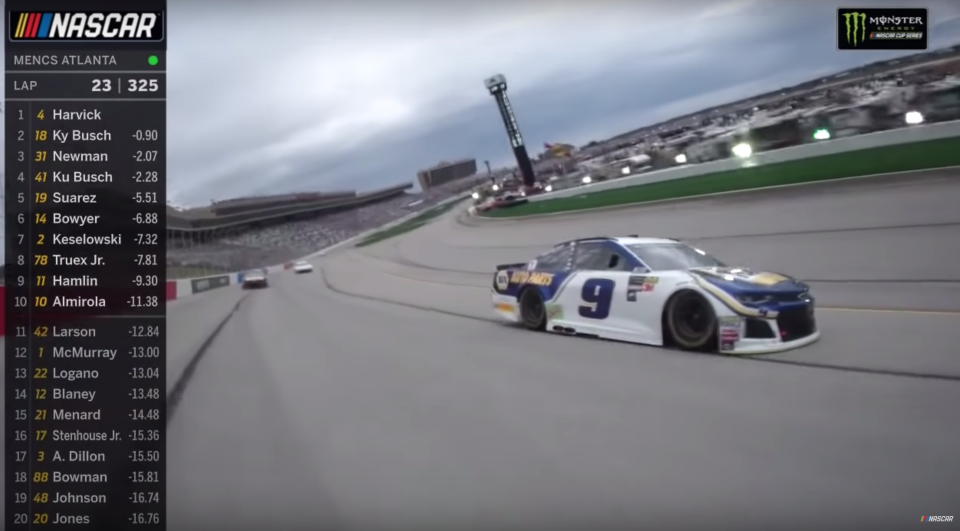

But let’s dig a little deeper, shall we? It’s way too early to draw conclusions about phase one of NASCAR’s lower horsepower/higher downforce rules combination designed to bring the cars on track closer to each other. We won’t be doing any projecting here. Instead, we’re going to go through the 2018 and 2019 races at Atlanta at various points to see if, in fact, the close racing you were being told you were seeing was actually happening.
Let’s get to it
2018 Folds of Honor QuikTrip 500
Winner: Kevin Harvick
Winning margin: 2.69 seconds
Lead changes: 24
Cautions: 5 for 28 laps
Quality passes (as measured by NASCAR’s loop data): 847
Cars on the lead lap (final green flag run of 21 laps): 13
2019 Folds of Honor QuikTrip 500
Winner: Brad Keselowski
Winning margin: 0.218 seconds
Lead changes: 25
Cautions: 5 for 30 laps
Quality passes: 864
Cars on the lead lap (final green flag run of 43 laps): 17
As you can see, Sunday’s race had two more lead changes and 17 more quality passes over, though that’s a quality pass increase of two percent across a 325-lap race. The race also featured the fewest passes in the last five years of any Atlanta race, according to NASCAR’s data.
The 2019 race had 2,036 overall green flag passes, down from 2,316 green flag passes in 2018.
The winning margin of the 2018 race was impacted significantly by Kevin Harvick’s fast car. He led over 180 laps. Kyle Larson, the driver who led the most laps in 2019 (142), finished 12th after he was trapped back in the field following a pit road penalty. Larson said after the race that his car was affected more by dirty air from other cars in 2019 than in previous years at Atlanta.
[Batter up: Join or create a 2019 Yahoo Fantasy Baseball league for free today]
How the intervals compared at various points
A competition caution came out after lap 31 in 2018. Here’s what the intervals looked like before that competition caution.
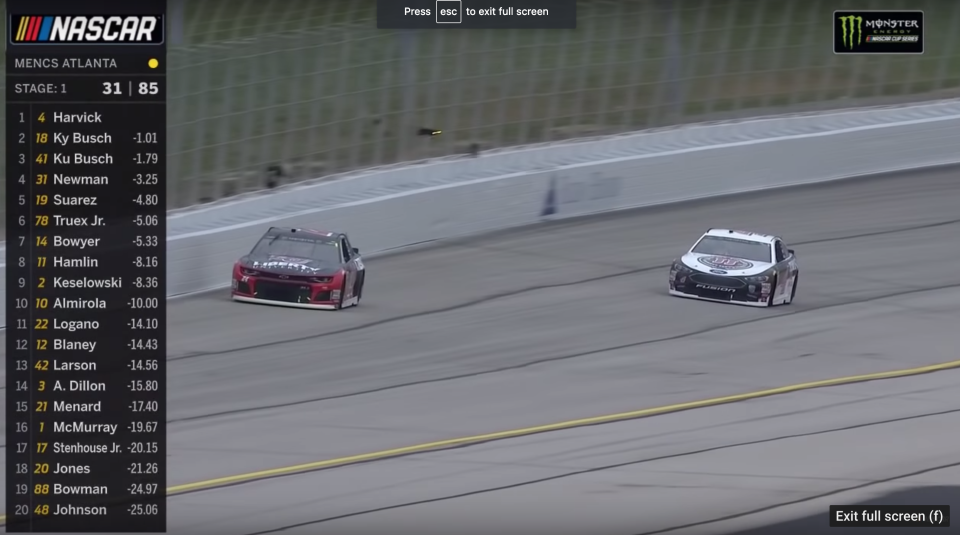
And here’s what they looked like in 2019 at a very similar point. As you can see, the cars near the front were closer in 2018, the car in 10th was marginally closer in 2019 and the cars in spots 16-20 were substantially closer in 2019 than they were at the same point in 2018.

Here’s what the intervals looked like 16 laps into the second stage in each race. This was when tires were still relatively fresh for each driver and the chaos of the first few laps post-restart had calmed down.
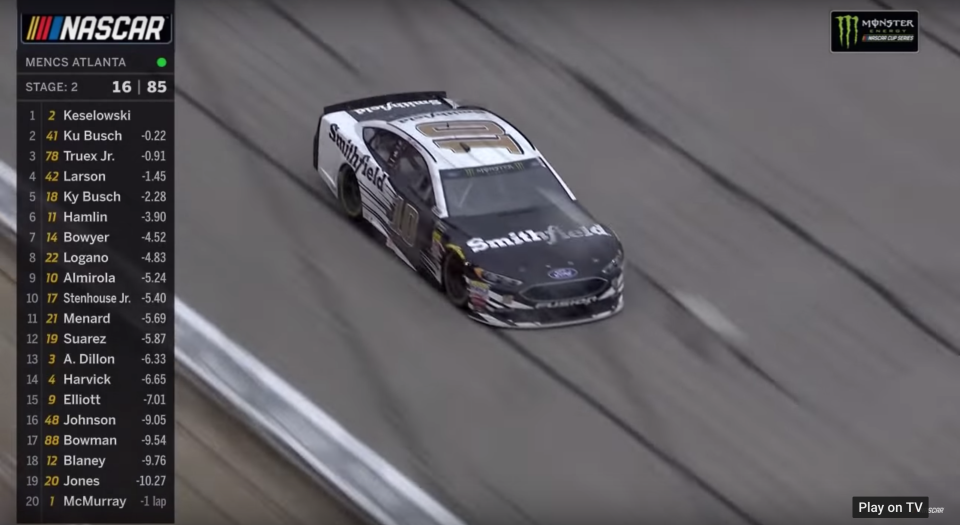
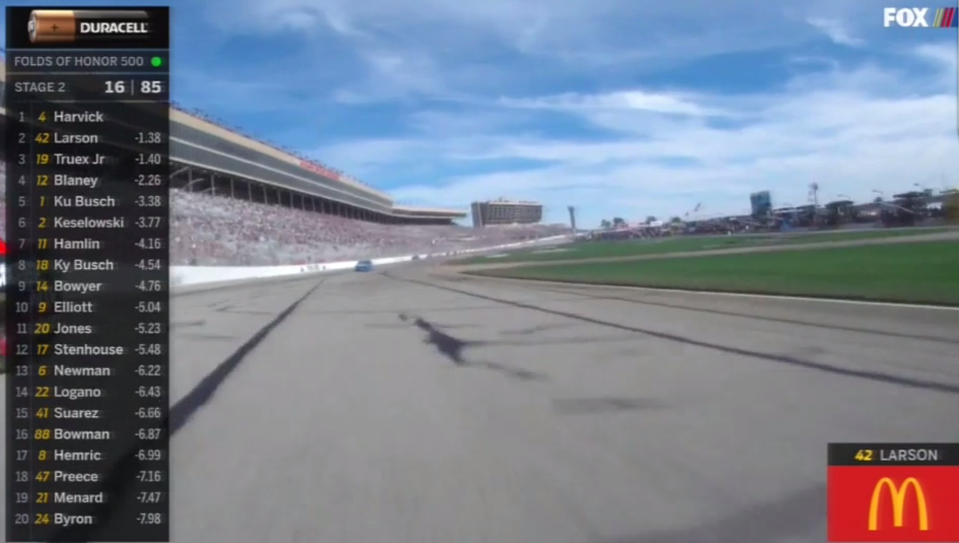
Stage 2 in each race went green the whole way through, so this is what the field looked like with just over 30 laps to go in each stage and after green-flag pit stops had happened.
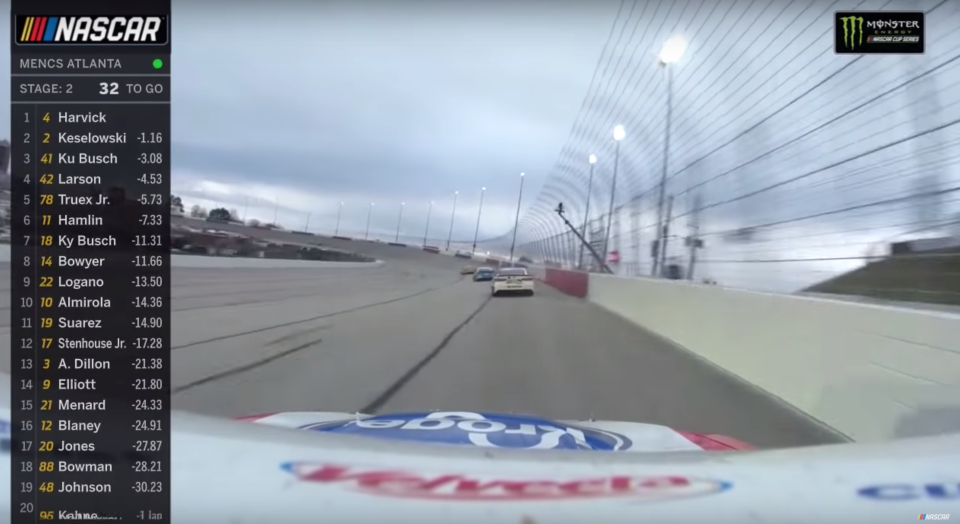
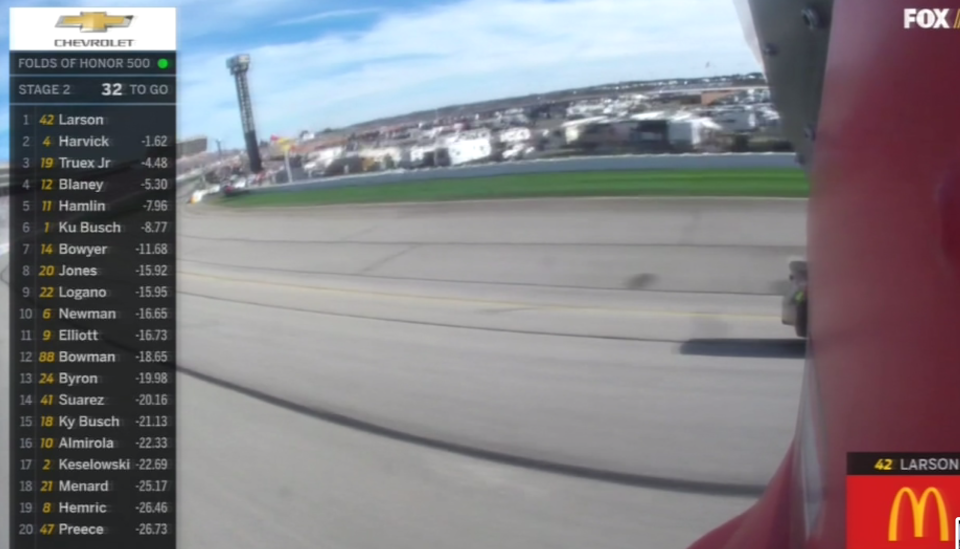
The third stages aren’t directly comparable because of the varying points of cautions in each race. But on lap 191 — both races went green on lap 178 — here’s what the intervals looked like.

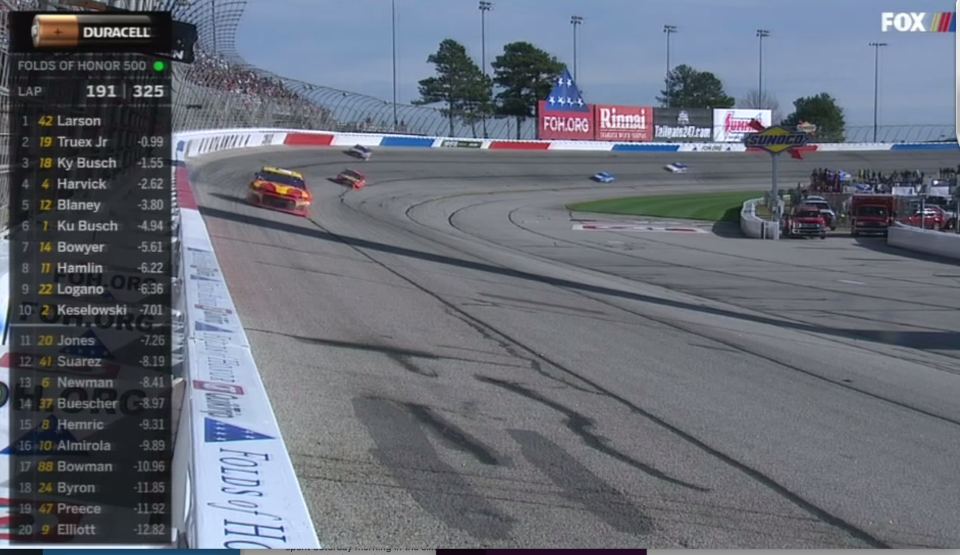
The selling of the closeness of the racing wasn’t limited to Fox, either. NASCAR vice president Steve O’Donnell tweeted at roughly lap 212 that the top three cars were within a second of each other on the track.
Over 300 miles into race and top three less than 1 Second apart. 42 still strong!
— Steve O'Donnell (@odsteve) February 24, 2019
That tweet was not true.

Restarts looked more hectic
Your eyes weren’t deceiving you, drivers raced closer together in the laps that immediately followed restarts. That was likely due to the combination of fresh tires and lower horsepower and increased downforce.
NASCAR was so thrilled with how the racing looked after restarts that it even released a highlight video of restart racing Monday morning. While cars were close together and spread out all over the track after races went green, it’s worth remembering when watching the below video that overall passing stats were down from 2018.
And just like your eyes weren’t deceiving you in the laps after restarts, they didn’t lie to you throughout the race. After a few laps post-restart, the racing at Atlanta didn’t look noticeably different than it did in previous years.
There were a few differences, as evidenced in those screenshots above. Cars at the back of the top 20 were able to stay closer to the leader as the race went on. Seventeen cars finished fewer than two laps down in 2018. On Sunday, 23 cars were either on the lead lap or one lap down. Cars at the front of the field, however, were roughly as close to each other as the cars in the same positions were a year ago.
In short, the racing wasn’t drastically different from what you saw a year ago at Atlanta. You might have thought it was better. You might have thought it was worse. It’s your brain. Think what you want. Just don’t blindly accept that racing is better and closer because someone paid to broadcast NASCAR told you it was.
– – – – – – –
Nick Bromberg is a writer for Yahoo Sports.
Follow @NickBromberg on Twitter
More from Yahoo Sports:


